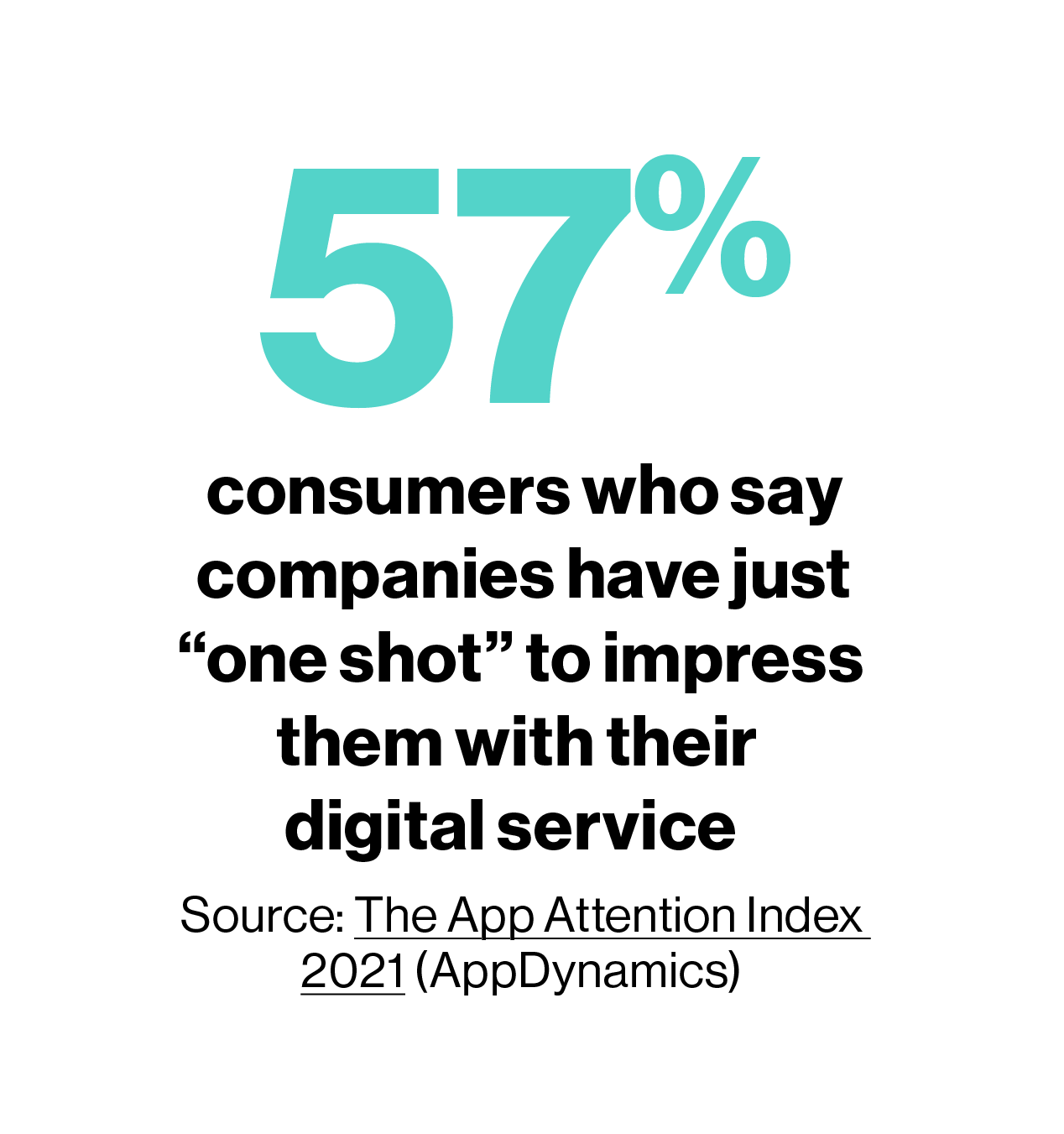A composable path to positive user experiences
In today’s digital economy, people buy things differently. Customers expect interactions with companies to be thoughtful, customized, curated, and most importantly, quick.

These experiences drive—and are driven by— technology’s constant progress. However, the advance of technology can cause headaches for the businesses delivering these interactions, even with the most talented product and delivery teams. Customization requires more complex tools and infrastructure. Multiplying complexity requires internal changes and using tools such as application programming interfaces (APIs), which are specialized blocks of code that can control access to software and hardware resources. API tools save programmers coding time and can simplify app development—all of which reduce time to market.
Companies that are stymied by the pace of change are usually limited by monolithic architecture, legacy systems, and outdated processes. Many of these tools have been functional—or simply passable—for years but have become clear barriers to innovation.
However, this can be managed when business leaders learn to think differently and begin to create a composable architecture. According to Gartner, a composable business is “an organization made from interchangeable building blocks.” This modular structure accommodates quick response to changes in demand, traffic, production, and supply chain challenges. An agile set of tools and infrastructure allows companies to keep pace with customer expectations, to deliver the rich, engaging experiences they demand.
“Businesses today want very different software that offers more of a human-centric, interactive experience. We’re seeing a generation of developer tools and technologies, like JavaScript and graphs, that are more about that,” says Matt DeBergalis, chief technology officer and co-founder of Apollo GraphQL.
Finding agility in the graph
GraphQL, an open-source data query and manipulation language, helps companies create and maintain a composable architecture, which allows teams to create better experiences for customers, quickly and efficiently. The result for product and engineering teams is the ability to make consistent, predictable APIs for faster design, development, and deployment of new features.

GraphQL can pull specific data from multiple data sources in a single API call, making APIs fast and flexible, and mitigating over- and under-fetching data issues (a common problem with older solutions, where too much or little data is pulled, making queries inadequate). DeBergalis explains, “The question becomes how to take existing software, such as inventory-control software, and reuse it or repurpose it.”
Large and small businesses, from small supermarket chains to industry giants like Netflix, report rapid gains from the agility of graph technology. During the past few years, Netflix has been integrating its APIs into a federated GraphQL platform. As a subscription streaming service and production company, Netflix IT handles enormous amounts of data (titles, production companies, performer data, financials, customer data, etc.), and many data entities are owned by different units. The federated GraphQL platform means that data can be managed and protected by its owner, shared with other stakeholders, and is searchable across entities, seamlessly for the user.

Jennifer Shin, senior software engineer at Netflix, says the growth enabled by graph technology has been considerable. “Not only has the federated platform enabled such explosive growth, but that old API monolith that used to be a bottleneck, that was complex and hard to reason about, and that so many considered to be a blocker, is now slated to be deprecated and fully removed,” Shin says.
Where companies use GraphQL to address these challenges, developers and programmers are enthusiastic. A recent survey on the State of JavaScript says 87% percent of JavaScript software programmers want to learn GraphQL. A RapidAPI Developer survey found “90.5% of developers expect to use APIs more or the same” in 2022.
“GraphQL is becoming more pervasive,” says Deep Varma, chief technology officer at Varo Bank. “Five years ago, the technology was still spreading, but now most of the companies I interact with use GraphQL.”
This content was produced by Insights, the custom content arm of MIT Technology Review. It was not written by MIT Technology Review’s editorial staff.

